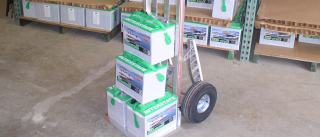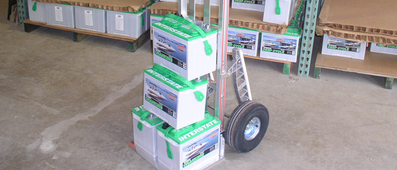robbob2112
Doing more research, mosty harmless
Sorry, I was replying to @MisterSandals, I could see that you were using new stuff since you got into your cabinet.I used HPL, its as smooth as a mirror
He is sitting on cement board.
Sorry, I was replying to @MisterSandals, I could see that you were using new stuff since you got into your cabinet.I used HPL, its as smooth as a mirror
The fuse holders as on the pictures are certified and "fire retardant" if thats correctly written.Did the fuse sustain an arc and ignite combustible material?
Or did the cell fail, get backfed so it over-charged and vented, and is backfed current in that case sufficient to blow fuse?
If so, fuse is not explosion-proof and would be source of ignition.
Fuses might provide the spark/arc upon an over current situation but something combustible nearby has to burn. So point of ignition possibly but does not explain much.The fuse holders as on the pictures are certified and "fire retardant" if thats correctly written.
What the exact cause of fire was i guess well never know. The fire expert pinpointed that fuse as the source of the fire. His knowledge about fires, temperatures, etc was amazing.
Here is the first post where the OP mentioned to problem. I think somewhere in another thread he may have also posted in a thread where a battery was the cause of a fire. I don't think we know what caused the fuse to melt.If so, fuse is not explosion-proof and would be source of ignition.
Inspection of the fire expert revealed that a melt fuse melted, and created an arc between the 2 points wich ultimatly started the fire.
Didn't you ever hear not to leave batteries on a concrete floor? It'll suck the charge out!Wait wut? What's the problem with sitting on cement board?
That's a pretty cool idea and more economically achievable than I thought. I have a vent to the outdoors so I could add one of these to blow into the case if the smoke alarm went off. PSSSHHHHHHHHHH.These are the types of events that keep me up at night. One thing that gives me a bit of peace of mind is having an automatic CO2 fire suppression system in the building where our batteries/inverters are. I don't want to just know there's an issue, I want the issue stopped ASAP to prevent further damage. CO2 also won't damage anything in an electrical fire like H2O would. It just removes the oxygen.
Some people still believe that. Reality is that it's not true anymore.Didn't you ever hear not to leave batteries on a concrete floor? It'll suck the charge out!
I believed that until this threadSome people still believe that. Reality is that it's not true anymore.
I put my car's battery on top of a box in my garage to keep it off the floor because I had heard this tale and had no idea if there was any truth to it or not. It made no sense to me but I erred on the side of caution anyway (I've gone through too many batteries for this car from stupid mistakes killing them lol)Some people still believe that. Reality is that it's not true anymore.

Personally I use midnite DC breakers but the t class takes less room. For the blue boy brigade the class t lynx power ins are the "seamless" option.So is the take away from this that we should all use appropriate sized T class fuses on the +ve of each battery, and after the bus bar they parallel to?
The picture in that article hurts me lol. Those are nice batteries too.
The Concrete Truth About Batteries Stored on Concrete
Have you heard the one about batteries discharging when stored on concrete? Apparently, some people have taken to storing 12V batteries—the kind used in electric wheel chairs and emergency lighting systems—on wooden shelves to maximize their life expectancy. Is there a spark of truth to this or...www.mcgill.ca

To this day I can't leave a battery on concrete without hearing my Dad's voice booming in my head!Some people still believe that. Reality is that it's not true anymore.
"DON'T LEAVE THAT BATTERY ON THE CONCRETE FLOOR!!!"To this day I can't leave a battery on concrete without hearing my Dad's voice booming in my head!
Just remember that NMC chemistry creates oxygen during thermal runaway so CO2 or any form of fire suppression that relies on depriving the fire of oxygen will not be effective for that part of a fire if you are planning on using that type of Lithium Ion chemistry. The safer chemistry is LFP and most of the DIY packs described on this forum is the most used chemistry. CO2 or other fire suppression methods would have worked in the OP's case to put out the fire that apparently started in the wiring.The CO2 fire suppression system that @Cronix posted is a phenomenal idea, it'll be added to my list of must haves.
Wow, very Sorry for you loss. Glad to hear you and your family are safe!
This served to heighten my internal debate about diy'ing my own batteries even greater.
The CO2 fire suppression system that @Cronix posted is a phenomenal idea, it'll be added to my list of must haves.
These are the types of events that keep me up at night. One thing that gives me a bit of peace of mind is having an automatic CO2 fire suppression system in the building where our batteries/inverters are. I don't want to just know there's an issue, I want the issue stopped ASAP to prevent further damage. CO2 also won't damage anything in an electrical fire like H2O would. It just removes the oxygen.


